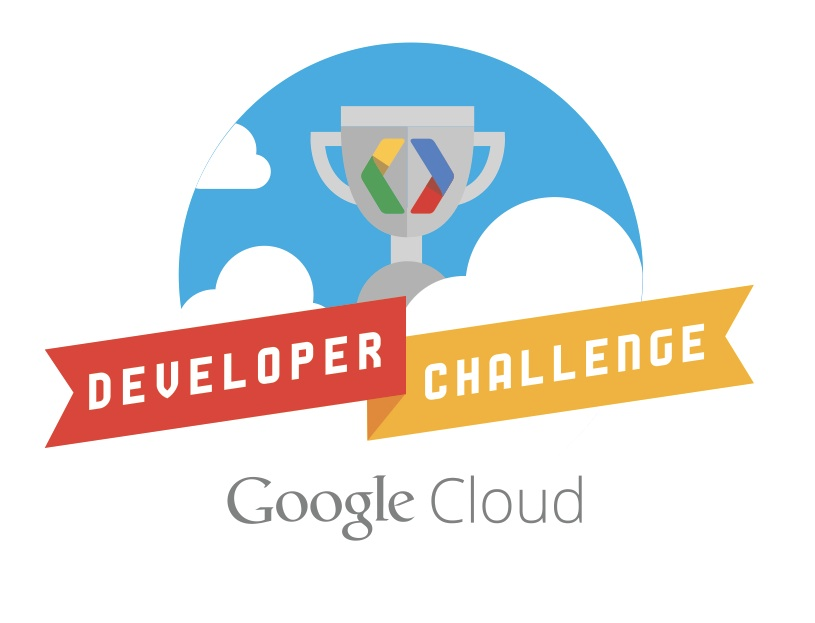

Google Cloud Platform
- Google App Engine - Host your applications
- Google Compute Engine - Host your Virtual Machines
- Google Cloud Storage - Host your files
- Google Cloud SQL - Host your databases
- Google BigQuery - Analyze data
- Google Cloud Datastore - No-SQL database in the cloud
- Details at cloud.google.com

What is Google App Engine?
- PaaS (Platform as a Service)
- A web application platform
- Create applications in Java, Python, Go or PHP
- Store data in the cloud
- A set of APIs, including
- Data Storage
- Task Queues
- Users
- Easy to
- Build and Deploy
- Manage
- Scale
- Details at developers.google.com/appengine
Developing with Google App Engine
You focus on building awesome web applications, App Engine does the rest
Always remember: developers.google.com/appengine
Four easy steps
- Step 1: Get the Google App Engine SDK
- Step 2: Write code
- Step 3: Test locally
- Step 4: Deploy to App Engine
Get the Google App Engine SDK
The base for your application
The Google App Engine SDK
The SDK contains:
- Libraries for the many APIs the platform provides
- Get it here
- For Java, there is an Eclipse plugin
- Utilities to deploy locally (Local Dev Server) and to your App Engine instance
Write some code
Use the SDK libraries to build your application
A Google App Engine application
Your application can be written in
- Java
- Python
- Go (*)
- PHP (*)
Your application will execute in a sandbox
- More secure
- More scalable
- More distributable
The sandbox
The sandbox aims to make it better for everyone
- Applications don't interfere with each other
- Applications don't rely on machine-specific resources (e.g. filesystem)
Restrictons vary per language, but generally
- No filesystem access (use Datastore to persist data)
- No opening sockets (use URLFetch to make HTTP/HTTPS requests)
- Complete a web request in < 60 seconds (return fast, use Tasks)
- No system calls
Java
- Implement servlets and JSPs
- Support for Java 6 or Java 7
- The Java App Engine environment supports a subset of the JRE libraries
- IDE Plugins for
- Eclipse (Google-supported)
- Netbeans
- IntelliJ
Anatomy of a (Java) web application
- Project Root
src/- Source code goes here
war/- Static files go here
index.htmlstyle/js/
WEB-INF/web.xml- Servlet configurationappengine-web.xml- App Engine configuration
Python
- Applications can use any WSGI-compatible web application framework
- webapp2 is included in the runtime
- Support for Python 2.5 (deprecated) and 2.7
- Supports some useful libraries (Django, Jinja, etc.)
PHP
- PHP 5.4 runtime
- > 35 extensions enabled
Go
- Support for Go v1
- Use the Go http package
- Writing App Engine apps is the same as writing stand-alone Go web servers
Anatomy of a (Python|PHP|Go) web application
- Project Root
app.yaml- App Engine configuration- Source code
- Static files
- SDK contains
new_project_templateanddemosdirectories to help
Storing data
- Datastore
- Schema-less, NoSQL database
- You define entities with properties
- Max of 1MB per entity
- Blobstore
- Store large amounts of data
- Google Cloud SQL
- MySQL database in the cloud
- Uses the familiar MySql client library approach
- Google Cloud Storage
- Cloud-based file-system
- ACLs
- Resume functionality
Google App Engine Services
Support differs per language
Free quota and then start paying
- URL Fetch
- Make an HTTP/S request
- Use normal lanuage-specific approach, e.g. java.net.URL.openStream
- Task Queues
- Defer longer tasks
- Task has 10 minutes to complete
- Memcache
- Store key/value pairs in memory
- 1MB data limit per entry
Google App Engine Services
- Users
- Authenticate users
- Use their Google account (incl. Google Apps accounts) or OpenID(*)
- Logs
- Access logs data from your application
- Request logs - contains data about each HTTP/S request
- Application logs - contains messages you log from your application
Test your application locally
Run your code in a development application server
Testing your application locally
- SDK: Use
dev_appserver.py - Eclipse: Run or debug as Web Application
- Management console similar to production
- Acts like App Engine with small differences
- Datastore is a local file
- User service is mocked
- URL Fetch is from your computer
Deploy to App Engine
It works! Let's go!
Deploying to App Engine
- SDK: Use
appcfg.py - Eclipse: Deploy to App Engine
- The SDK will package your application and update it
- You'll need to create an App Engine account first and create an Application ID
Google App Engine Management Console
- Visit appengine.google.com
- Perform many admin functions
- Manage applications and instances
- View Logs
- View Data (Datastore, Blobstore)
- Manage versions
- Manage Task Queues
- View detailed quota-usage information
Some pointers
- Read fast, write slow
- Use memcache for common data
- Defer writing of data with Task Queue
- Think about indexes on your data
- De-normalise your data
- Decrease the number of join-like queries to Datastore
- For example, in your entity, use a list of objects for a parent-child relationship
- If you're using Java
- Use JDO/JPA to make entity persistence simpler
- If you can, use Google Cloud Endpoints
- Python and Java only
- Create an API to manage your entities
- The SDK generates libraries for iOS, Android and Javascript
- Single API for different consumers
Summary
- Google App Engine is really easy to get started with
- The documentation is excellent (examples to help you get started)
Useful links:
<Thank You!>
